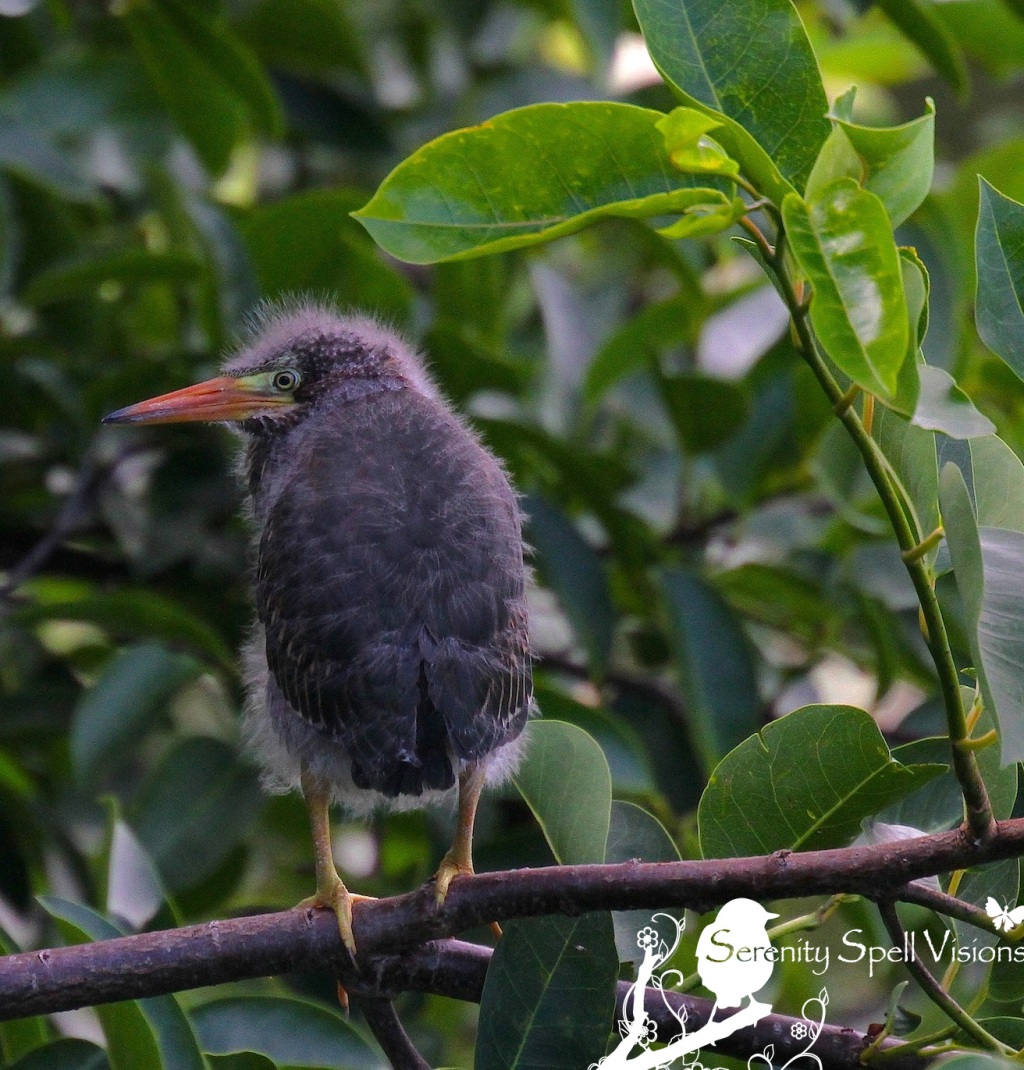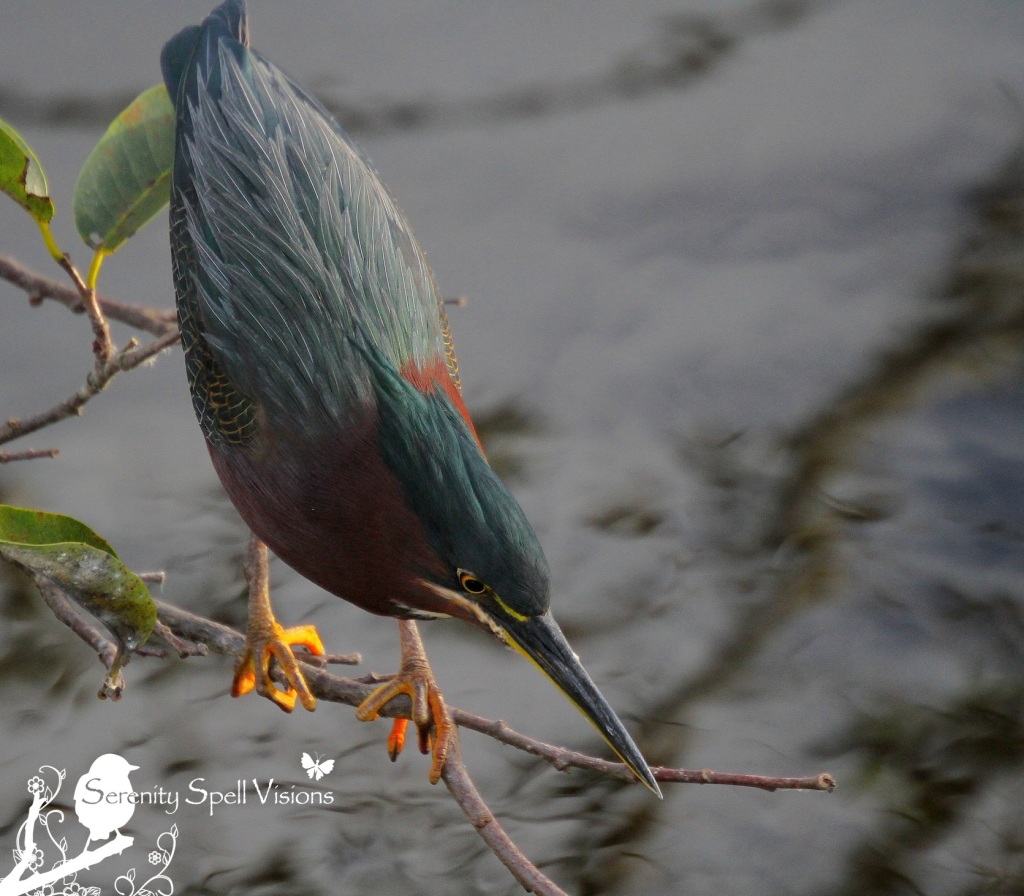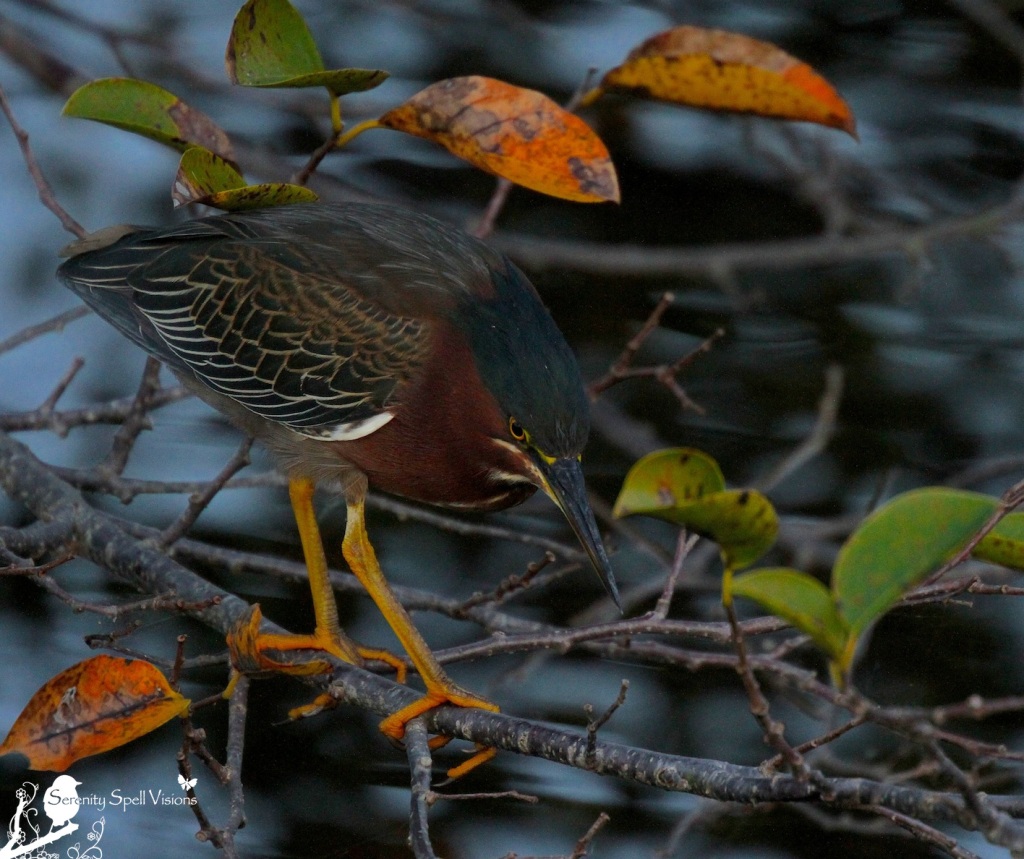Cantankerous Puffs of Adorable
Any glimpse into the life of an animal quickens our own and makes it so much the larger and better in every way. —John Muir
We’re finally getting drenched with some much-needed rains in South Florida — the swamps and Everglades are thrilled, I’m sure of it. Last Monday alone, we received ten inches from the sky… TEN INCHES. That kind of downpour creates flash flooding, and the accompanying high winds (and lovely lightning) can wreak havoc on birds’ nests.
During a quick visit to the wetlands between the raindrops, it was obvious that there was much repair to the nests being done throughout the preserve. As I was blankly staring at a turtle (I love our turtles), I caught some commotion deep within a Pond apple tree, one that’s been an annual home to nesting Green herons. Mom had just returned with branches to repair the nest, and her little ones were obviously expecting food — and visibly unhappy about the sticks over the food.
All babies are sweet, but Green heron babies are little cantankerous puffs of adorable.
And back she flew to the wetlands, to high commotion, for more nest-building materials. So much work to be done; babies still needed their food….
[For all you locals: If you’re as fascinated by the area’s water cycle and flow as I am, check out Go Hydrology in my “Florida Nature Blogs” to the right — fantastic daily updates and general information!]




















